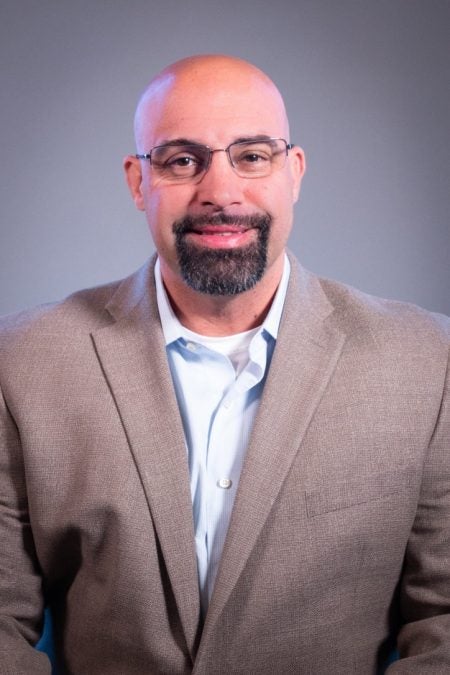College of Education faculty member receives $250,000 grant from NSF
Dr. Leonard Annetta, the Taft Distinguished Professor of Science at East Carolina University’s College of Education, received a $250,000 Early Concept Grant for Exploratory Research (EAGER) from the National Science Foundation.
The money will fund a proof of concept, a small exercise to test a project’s viability, for Mixed Reality for Improved Science Reading Comprehension, a partnership between ECU, Cumberland County Schools and Spark Plug Games. The partnership seeks to create an augmented reality or mixed reality technology that will help young students understand vocabulary embedded in text, specifically science concepts and vocabulary.
“Dr. Annetta’s research and the National Science Foundation’s funding to create a proof of concept are critically important in the development of educational content that makes best use of innovative technologies,” said Dr. Abbie Brown, professor and chair of the Department of Mathematics, Science and Instructional Technology Education. “Mixed reality is an exciting technological frontier; a collaboration of this kind is critically important to discovering how best to use the technology to improve learning.”
According to Annetta, when students come across a word they don’t know in their readings, they may gloss over it, which causes them to lose the context of the text.
“What we’re proposing to do is when their eyes fixate on that word, animations will pop up in 3D on the page through this mixed reality technology where there’s some audio that explains it, there’s some simulation or video to show what it is,” Annetta said.
Spark Plug Games, a game company based in the Triangle, will build the software for the project. Annetta said the company would use HoloLens technology, the new mixed reality smartglasses made by Microsoft.
The target group for the project is fourth and fifth graders, but Annetta hopes to expand that in the future to lower elementary grades. “The animations and the fun of what we’re embedding into these vocabulary words I think can really get kids engaged and excited about science,” he said.
He would also like to see this technology used with second-language learners who don’t speak English as their first language. “The science doesn’t change based on your language, but reading science changes based on your language,” Annetta said.
This grant is the first step in the process. EAGER proposals, like this project, support exploratory work in the early stages of research, according to the NSF.
“They loved the idea, NSF did, but just couldn’t wrap their heads around how it would actually work,” Annetta said. “So they said here’s $250,000, give us a proof of concept, one page, show us how it works and give us some good data.”
If the project yields good data, Annetta and his team plan to apply for another $750,000 in funding.
“Ultimately where I’d love to see this go,” Annetta said, “NSF really wanted us to use HoloLens but I’d want to use the augmented reality on mobile devices, phones and tablets, because the software development kit for Android and Apple devices has augmented reality capabilities.”
As of right now, Annetta thinks that Apple and Android devices are a year or two away from being technologically capable of hosting the software they’re designing. The HoloLens has the computing power to pull of their proposal. “I think it’s a good tool for a proof of concept and as technology evolves as quickly as it does, soon enough we’ll be able to use phones and tablets.”
